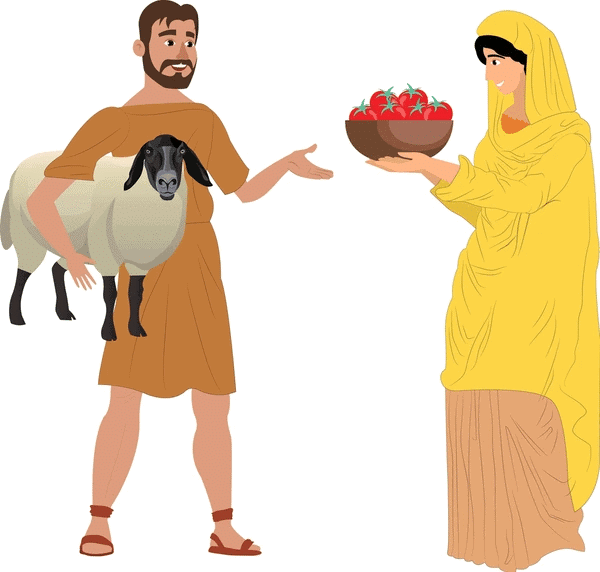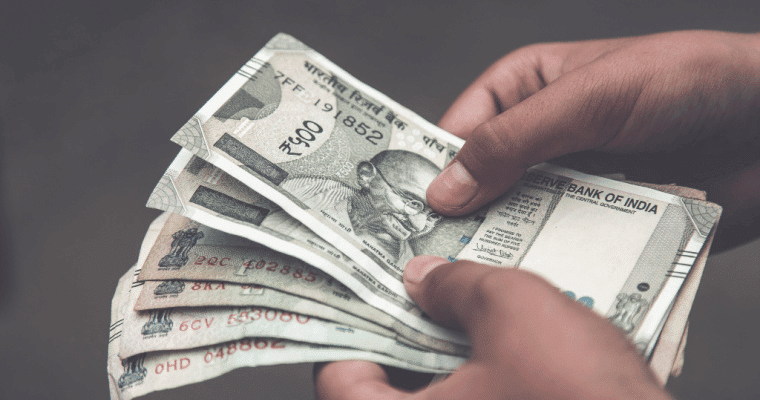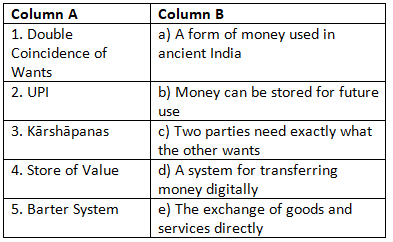CBSE Class 7 Social Science Chapter 11 From Barter to Money Worksheet - Free Download
| Table of contents |

|
| Multiple Choice Questions (MCQs) |

|
| Fill in the Blanks |

|
| Very Short Answer Questions |

|
| Short Answer Questions |

|
| Match the Following |

|
Multiple Choice Questions (MCQs)
Q1: What was the main problem with the barter system?
a) Lack of variety of goods
b) Double coincidence of wants
c) Lack of trust between traders
d) Inability to measure value
 Barter System
Barter System
Q2: What is money primarily used for?
a) To save for future use
b) To measure value
c) To buy and sell goods and services
d) To store commodities
Q3: Which of these is an example of modern digital money?
a) Cowrie shells
b) Wheat
c) UPI
d) Paper notes
Q4: What is the main reason why money is more efficient than the barter system?
a) Money can be saved and used later
b) Money is harder to carry
c) Money only works with coins
d) Money has no value
Q5: Which of the following was one of the earliest forms of money?
a) Digital currency
b) Cowrie shells
c) Coins with currency symbols
d) Banknotes
Q6: What does the term "medium of exchange" refer to?
a) A tool used to measure trade
b) A method to store wealth
c) Something that is accepted for buying and selling
d) A product for trade
Q7: Which item was commonly used as money in ancient India?
a) Cattle
b) Paper notes
c) Digital codes
d) Credit cards
Q8: What is the main advantage of money over bartering goods like wheat or cattle?
a) Money is portable, divisible, and durable
b) Money can be eaten
c) Money is easier to store than goods
d) Money does not need to be traded
Q9: What did John Maynard Keynes say about money?
a) Money is only useful for buying goods
b) Money connects the present to the future
c) Money is not important for trade
d) Money should only be used in the form of coins
Q10: What was one problem with using cattle in the barter system?
a) Cattle were not accepted by all traders
b) Cattle could not be divided easily
c) Cattle rotted quickly
d) Cattle were difficult to transport
Fill in the Blanks
Q1: The barter system was inefficient because it required a ________ of wants.
Q2: Money solves the problems of the barter system by being ________, meaning it can be carried easily.
Q3: In the barter system, a farmer could not split an ________ into smaller units for trade.
Q4: The modern form of money used in transactions is ________ currency.
Q5: One early form of money used in ancient India was called ________ or panas.
Q6: ________ is an example of digital money that allows users to transfer money between accounts.
Q7: The ________ is the symbol used on Indian banknotes, designed in 2010.
Q8: The ________ system, introduced in ancient China, was the first use of paper money.
Q9: A major disadvantage of using the barter system was that goods like ________ could spoil quickly.
Q10: The modern form of payment involving scanning a ________ code is called digital money.
 Paper Currency
Paper Currency
Very Short Answer Questions
Q1: What was the primary problem with the barter system?
Q2: What does "money as a store of value" mean?
Q3: How did the invention of money help in trade?
Q4: What is the modern equivalent of money used in daily transactions?
Q5: What does "durability" mean in the context of money?
Short Answer Questions
Q1: Why was the barter system not effective for long-distance trade?
Q2: Explain the difference between the barter system and money.
Q3: What was the first form of paper currency used in India?
Q4: How did money evolve from coins to digital money?
Q5: How did John Maynard Keynes describe the role of money?
Match the Following
(Match Column A with the correct option in Column B)

For Worksheet Solutions, go to Worksheet Solutions: From Barter to Money
|
1 videos|107 docs
|
FAQs on CBSE Class 7 Social Science Chapter 11 From Barter to Money Worksheet - Free Download
| 1. What is the significance of money compared to barter in trade? |  |
| 2. How did the concept of money evolve from barter systems? |  |
| 3. What are some advantages of using money over barter? |  |
| 4. Can you explain the role of banks in a monetary system? |  |
| 5. What are examples of goods that were historically used as money before coins? |  |
















